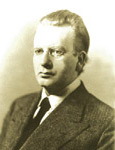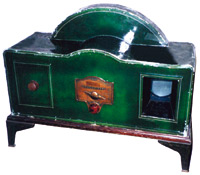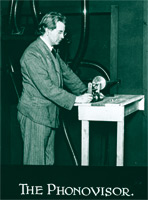
| Home : ITU News magazine | ||||||||||||||||
Turning to televisionIt is not easy to give a precise answer to the question "who invented television?" Many people contributed the elements of a system for "seeing at a distance." It was Baird, however, who, in October 1925, achieved the first television image and, soon afterwards, gave the first public demonstration of the new medium, in London. He used a device that he had named a "Televisor," based on a mechanical system for scanning images that had been invented in Germany by Paul Nipkow in 1884. A similar idea was also being explored in the United States by Charles Francis Jenkins. Baird succeeded in producing a picture comprising just 30 lines that refreshed itself 12.5 times per second. A decade or so later, this mechanical device was supplanted by electronic television systems, based on the cathode ray tube, which were developed in the United States by Russian inventor Vladimir Zworykin and by Philo T. Farnsworth. It was this type of equipment, which could offer pictures with hundreds of lines, that became the basis for the boom in television from that time onwards. While Baird may not have been the originator of modern television, he was nevertheless a talented engineer who contributed a great deal to the new technology. In fact (and also in answer to last month’s question), it was Baird who invented the world’s first video recorder. In October 1926 he applied for a patent on "Phonovision", his system of recording on video disks.
The first recordingsPhonovision too was based on mechanical principals. The television camera was linked mechanically to an instrument for recording gramophone records. It was on such disks that the limited bandwidth of Baird’s broadcasts could be recorded. Phonovision had two major problems to deal with: the poor recording quality of the day, and the lack of synchronization in the replay speed of the disk. To create a steady image, the same two pieces of equipment had to be used for recording and playback. Because of these difficulties, Baird’s plan to produce domestic versions of "Phonovisors" was never realized. But in 1996, Britain’s National Museum of Photography, Film and Television decided to make modern copies of the Baird disks in their possession, so as to keep the images safe in their archives. Consultant engineer Donald McLean developed special computer programs to use digital imaging to recover the Phonovision pictures for posterity. These were the first electronic images ever to be recorded, predating the invention of a practicable video recorder by some 25 years. And it would be half a century before video recorders for home use were developed in the 1970s. Colour television tooBaird continued to work on the development of television —including the electronic system — for the rest of his career. In 1944, for example, he gave the world’s first demonstration of an entirely electronic colour television, the "Telechrome." This device had a screen of 75 x 60 centimetres — a far cry from the tiny images on the original Televisor. John Logie Baird had weak health throughout his life, and it was at the early age of 57 that he died in England in 1946, a few days after televising the Victory Parade in London marking the end of the Second World War. He was a visionary, but could he have imagined the huge, flat, liquid-crystal or plasma displays in the homes of today? Or the pocket-sized mobile phones that have also begun to be used as television receivers? Their screens are of a similar size to those on the Televisior. It seems that, in some ways, television history has come full circle!
|
||||||||||||||||



